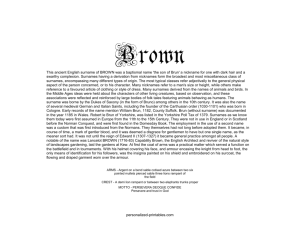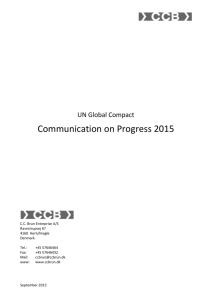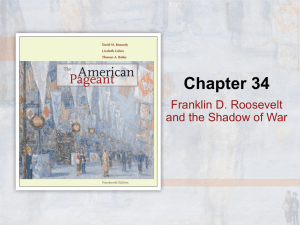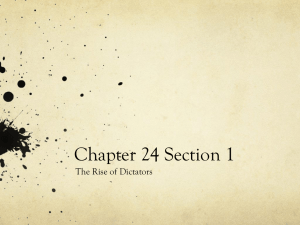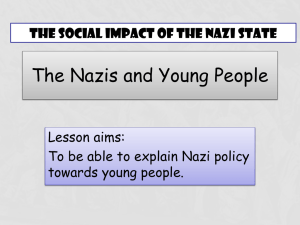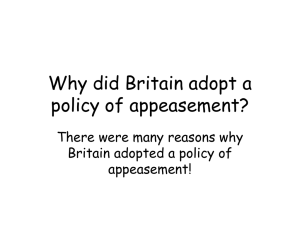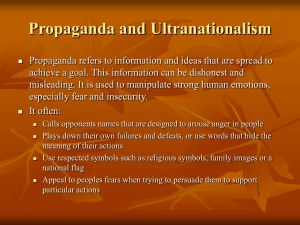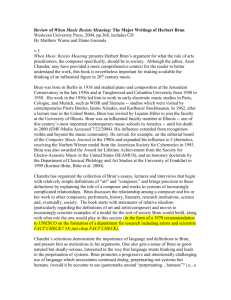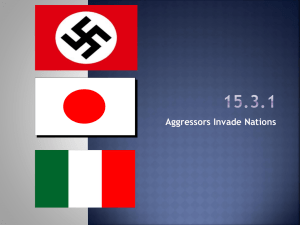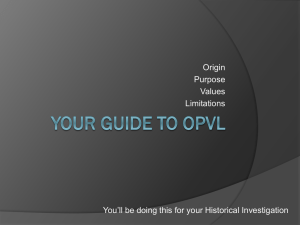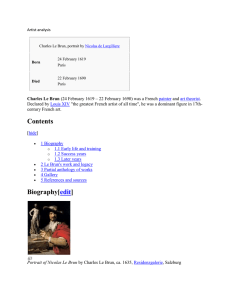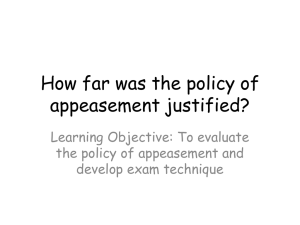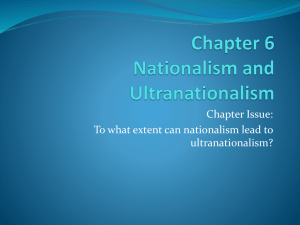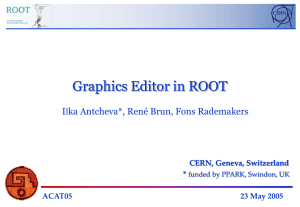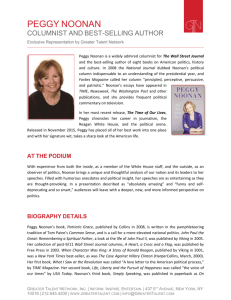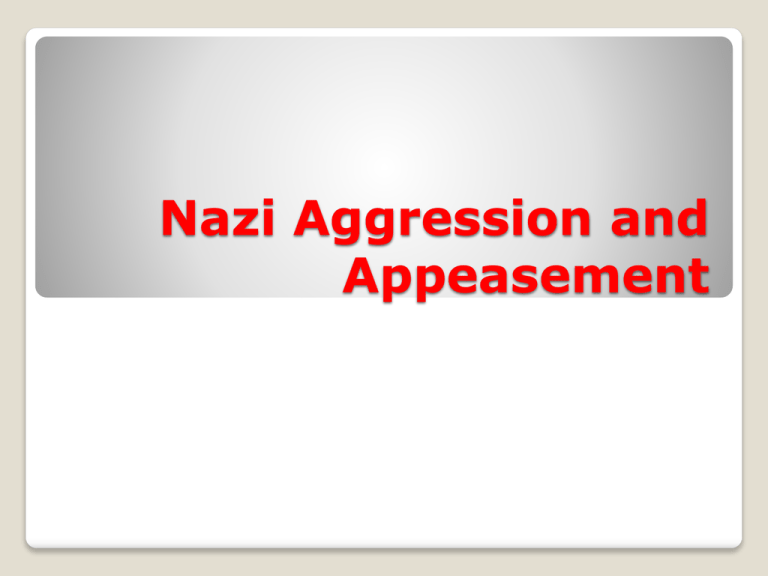
Nazi Aggression and
Appeasement
Hitler’s rise to Power
1930’s
1933
1935
• The Nazi Party controlled the majority of
the seats of the legislature
• Hitler was offered the Office of the
Chancellor
• Through a series of political moves and
legislative acts Hitler would become the
dictator (Fuhrer) of Germany
Nazi Aggression and the Policy of Appeasement
1936- Germany moves its
army into the Rhineland
(DMZ) between France and
Germany (Brun 454)
1938- Germany annexed Austria
(Brun 454)
1938- Hitler demands
that Germans in
Czechoslovakia be
given the right to vote
on whether or not they
want to join Germany
(Brun 454)
1939Germany
invades
and takes
over
Czechoslov
akia
(Brun 454)
1939Germany
invades
Poland and
Great Britain
and France
declare war
(Brun 454)
Complete
SOAPSTone
Restate the
question
Provide evidence
from the text
Assignment
Document #5
In this speech to Parliament, British Prime Minister
Neville Chamberlain explains why he favored a
policy of appeasement in dealing with Hitler .
“With a little good will and determination, it is possible
to remove grievances and clear away suspicion… We
must try to bring these four nations into friendly
discussion. If they can settle their differences, we
shall save the peace of Europe for a generation.”
“And, in The Times (London): I shall not give up the
hope of a peaceful solution. We sympathize with a
small nation faced by a big and powerful neighbor.
But we cannot involve the whole British Empire in
war simply on her account. If we have to fight, it
must be on larger issues than that… I am a man of
peace… Yet if I were sure that any nation had made
up its mind to dominate the world by fear of its
force, I should feel that it must be resisted… But
war is a fearful thing.”
(Noonan 117)
Henry Brun: Essential World History, Amsco School Publications 2006
Noonan, Theresa C: Document Based Assessment Activities for Global
History Classes, J. Weston Walch Publisher, 1999
Sources


